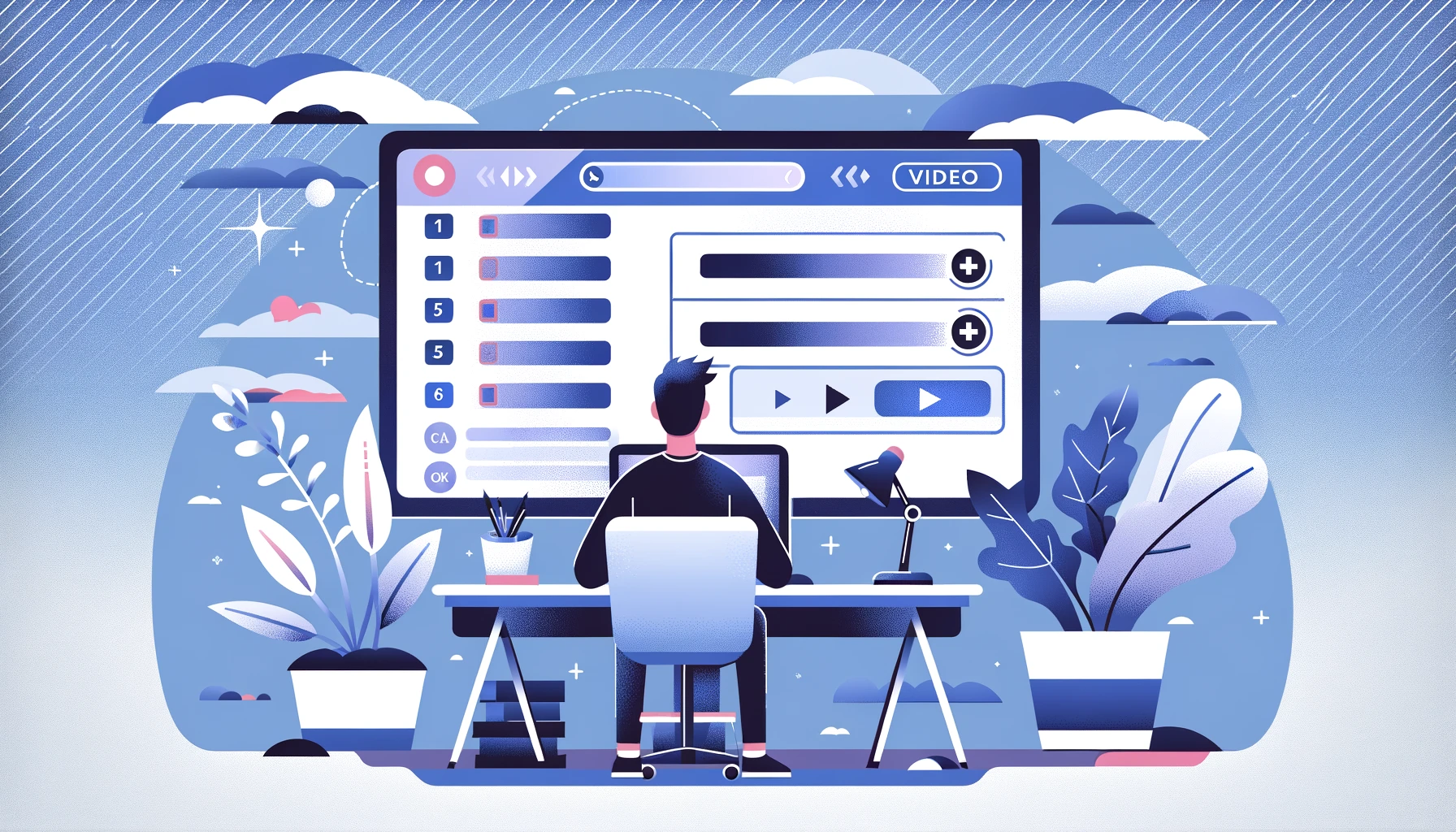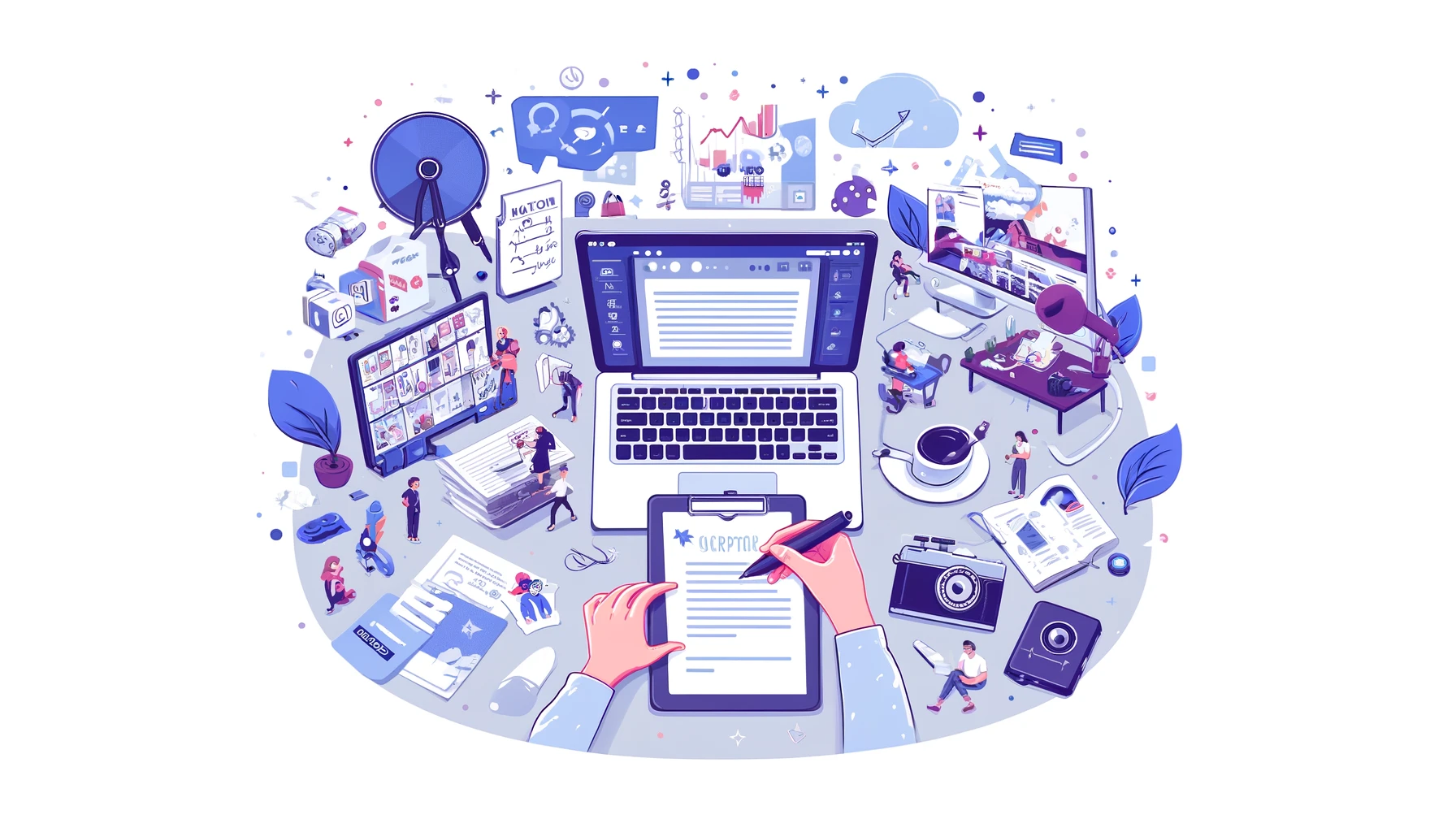
Create AI videos with 230+ avatars in 140+ languages.
Picture this: Your sales team just sat through another hour-long PowerPoint on objection handling.
Two weeks later, they're fumbling through customer calls, unable to recall what they learned. Sound familiar?
Traditional training methods often fail to stick because they don't let people practice in realistic situations.
That's where scenario-based learning changes everything.
What is scenario-based learning?
Scenario-based learning (SBL) is a strategy that walks learners through a storyline where they make decisions, training their critical thinking and problem-solving skills.
SBL requires that you think on your feet, make decisions, and see how your choices play out in a given context.
In short, scenario-based learning is all about active learning.
Evidence that Scenario-Based Learning Works
If you’ve ever struggled to keep learners engaged, you’re not alone. 82% of employees prefer learning through interactive videos because they hold attention better than non-interactive formats.
When you combine interactivity with realistic scenarios, you get training that not only engages but actually sticks.
Research backs this up. A large meta-analysis published in PNAS found that people are 55% more likely to fail when they learn passively compared to when they’re actively involved.
That’s exactly what scenario-based learning does. It transforms learners from passive recipients into active participants who apply knowledge in real-world contexts.
Beyond engagement and performance, SBL also boosts satisfaction.
A study in Advances in Physiology Education found that learner engagement and satisfaction were highest with scenario-based learning compared to other methods like GPA-based or project-based learning.
In my experience working with L&D teams, the scenarios that get the highest engagement scores are those that mirror real frustrations employees face—not idealized textbook situations.
When learners recognize their daily challenges in the training, they lean in.
Experiential learning keeps you hooked. It's adaptable, makes the learning process fun, and makes you use your imagination.
Scenario-based learning examples and types
A scenario is a mini-adventure in which you learn by making choices, observing the learning outcomes, and adjusting your approach.
Below are some of my favourites that I often use when designed SBL courses.
I've provided some examples for each so that you can adapt them for your own strategy.
Scenario-based learning type 1: Problem-solving
The goal of problem-solving scenarios is to help learners identify, analyze, and solve complex problems.
Here's an example of problem-focused scenario-based learning. It gives a frame with a question, users select an answer, and realistic feedback is instant.
Scenario-based learning type 2: Decision-making
Decision-making scenarios train learners to analyze information, weigh options, and consider consequences to make informed decisions.
I've found that decision-making scenarios work best when you limit choices to 2-3 realistic options rather than overwhelming learners with six possibilities.
Scenario-based learning type 3: Critical thinking
This type of online training presents scenarios that require evaluating information, arguments, and different perspectives to form reasoned judgments and improve critical thinking skills.
Single, double, and triple-loop scenario-based learning
Scenarios can differ by complexity.
While anything with choices can be branching scenario-based learning, we also have single-loop, double-loop, and triple-loop learning scenarios on an axis from the simplest to the most complex scenarios.
How to create scenario-based learning videos
Many L&D teams struggle with complex authoring tools that require extensive training just to get started.
Creating interactive scenarios traditionally takes weeks, and outsourcing video production can cost thousands per minute. These barriers have kept powerful scenario-based training out of reach for many organizations.
With Synthesia, creating scenario-based learning videos is fast and easy. I'm going to show you how.
Step 1: Define the goal
I always start by deciding what skill I want people to practice—something like handling an upset customer, closing a tricky sale, or giving feedback as a manager.
Having a single, clear outcome makes it easier to keep the scenarios focused and realistic.
Step 2: Write short, believable scripts
I usually start by writing short, realistic scripts—things like customer escalations, sales calls, or performance reviews—and then bring them to life using AI avatars.
The avatars look and sound natural, complete with body language and gestures, which makes the scenarios feel more like real conversations than typical eLearning clips.
Step 3: Build the flow in Synthesia
Once I have my script, I set up the scenes in the Synthesia editor.
I pick avatars that fit the roles (manager, customer, employee, etc.) and place them in a background that matches the setting—an office, a shop floor, a virtual meeting room.
I also like to use the dialogue feature, which lets me add multiple avatars in a scene and assign each one a different voice. It’s great for simulating real workplace interactions or multilingual scenarios.
Step 4: Add decision points and branching
Once my scenes are ready, I add interactive branching.
At the end of a scene, I create a decision point where learners choose what to do next—usually two or three realistic options.
Each choice links to a new scene that shows the outcome of that decision.
If the learner picks the wrong response, I’ll have the next scene show a frustrated customer or a drop in satisfaction.
If they choose the right one, the follow-up shows a positive reaction or improved results. Keeping consequences clear helps the learning stick.
Step 5: Make it conversational with video agents
The really fun part is Synthesia’s video agents, which let learners actually talk to an AI character that listens and responds in real time.
This is perfect for role plays or coaching scenarios, where learners can practice soft skills in a safe, simulated environment.
I usually add a short debrief afterward that explains what went well and what could be improved.
Step 6: Wrap it into a complete learning experience
Once everything’s working smoothly, I wrap it all into a Synthesia course.
This is where I combine my videos, quizzes, and branching paths into one cohesive experience.
It's super easy to localize the entire course into different languages too.
Step 7: Publish and measure
Normally I start by sharing the course with a pilot group.
I'll track completion, branch selections, quiz accuracy, and the agent feedback summaries to get an understand of how learners are engaging with the course.
I'll then try and improve weak branches and tighten scripts where learners stall.
Synthesia provides some great video analytics for interactive videos, but I'll also try and measure real business outcomes. Did learners show improvement that can be tied to real-world business metrics?
About the author
Strategic Advisor
Kevin Alster
Kevin Alster is a Strategic Advisor at Synthesia, where he helps global enterprises apply generative AI to improve learning, communication, and organizational performance. His work focuses on translating emerging technology into practical business solutions that scale.He brings over a decade of experience in education, learning design, and media innovation, having developed enterprise programs for organizations such as General Assembly, The School of The New York Times, and Sotheby’s Institute of Art. Kevin combines creative thinking with structured problem-solving to help companies build the capabilities they need to adapt and grow.

You might also like
Frequently asked questions
What is scenario-based learning?
Scenario-based learning is a training approach that puts learners in realistic situations where they practice making decisions and solving problems, just like they would on the job. Instead of passively reading about customer service techniques or watching a lecture on sales objections, learners actively work through lifelike scenarios where their choices have consequences. This hands-on method transforms theoretical knowledge into practical skills by letting people experience challenges in a safe environment before facing them in real work situations.
The power of scenario-based learning lies in how it engages your brain differently than traditional training. When you're actively making choices and seeing outcomes unfold, you're using the same critical thinking and problem-solving skills you'll need in actual work situations. Research shows that learners retain 95% of information from video-based scenarios compared to just 10% from reading text, making it one of the most effective ways to build lasting skills that transfer directly to job performance.
Which training topics are best suited for scenario-based learning?
Scenario-based learning works best for training that involves complex decision-making, judgment calls, and interpersonal skills where there's no single "right" answer. Customer service escalations, sales negotiations, leadership conversations, and compliance situations with gray areas are perfect candidates because they require learners to weigh multiple factors and consider consequences. Technical onboarding also benefits from scenarios when employees need to practice workflows and understand how their actions impact systems or processes.
The key is choosing topics where context matters and where mistakes in real life could be costly or damaging. High-stakes situations like medical procedures, safety protocols, or handling harassment complaints are ideal for scenario-based training because learners can practice in a risk-free environment. Any training where you want employees to develop confidence through practice, rather than just memorizing procedures, will see dramatic improvements when you switch from traditional methods to scenario-based learning.
How can I create scenario-based training videos quickly without complex authoring tools?
Creating scenario-based training videos has become remarkably simple with AI-powered platforms that eliminate the need for cameras, actors, or technical expertise. You can transform a written script into a professional training video in minutes by selecting AI avatars to play different roles, choosing appropriate backgrounds, and letting the platform handle all the production complexity. This approach cuts traditional video production time from weeks to hours while maintaining the quality and engagement your learners expect.
The process starts with writing short, realistic scripts based on actual workplace situations your team faces. Once you have your scenarios mapped out, you simply paste the text into the platform, assign different voices to each character, and add decision points where learners choose their path. Modern AI video tools handle the heavy lifting of animation, lip-syncing, and scene transitions, letting you focus on crafting meaningful learning experiences rather than wrestling with complicated software or coordinating video shoots.
How do I add decision points and branching with clear consequences in Synthesia?
Adding decision points in Synthesia starts with breaking your scenario into clear choice moments where learners must decide how to respond. At each decision point, create separate scenes for each possible choice, labeling them clearly (like "Empathize with Customer" or "Explain Company Policy") so you can easily manage the branching structure. Link each choice to its corresponding outcome scene, showing immediate consequences through customer reactions, satisfaction scores, or manager feedback to make the impact of decisions crystal clear.
The key to effective branching is keeping consequences realistic and immediate. When a learner chooses a poor response, show a frustrated customer or declining metrics in the very next scene. For good choices, demonstrate positive outcomes like resolved issues or happy customers. Include brief coaching moments after each consequence to explain what worked or what could improve, then offer learners the chance to try different approaches. This immediate feedback loop helps cement learning while keeping the experience engaging and practical.
How do I measure the effectiveness of scenario-based learning in my organization?
Measuring scenario-based learning effectiveness goes beyond traditional completion rates to focus on real behavioral changes and business outcomes. Track immediate indicators like branch selection patterns to see which decisions learners struggle with, quiz scores to verify understanding, and time-to-completion to ensure engagement remains high. More importantly, monitor how these metrics translate to actual job performance through customer satisfaction scores, sales conversion rates, or safety incident reductions in the weeks following training.
The most valuable measurements connect learning activities directly to business results. Compare performance metrics before and after scenario-based training implementation, looking for improvements in areas like average handle time for customer service teams or deal closure rates for sales staff. Gather qualitative feedback through follow-up surveys asking learners which scenarios they've encountered in real work and how the training helped them respond. This combination of quantitative data and real-world application stories provides clear evidence of your training's impact on both individual performance and organizational goals.












